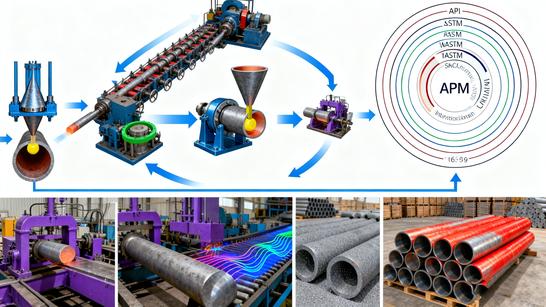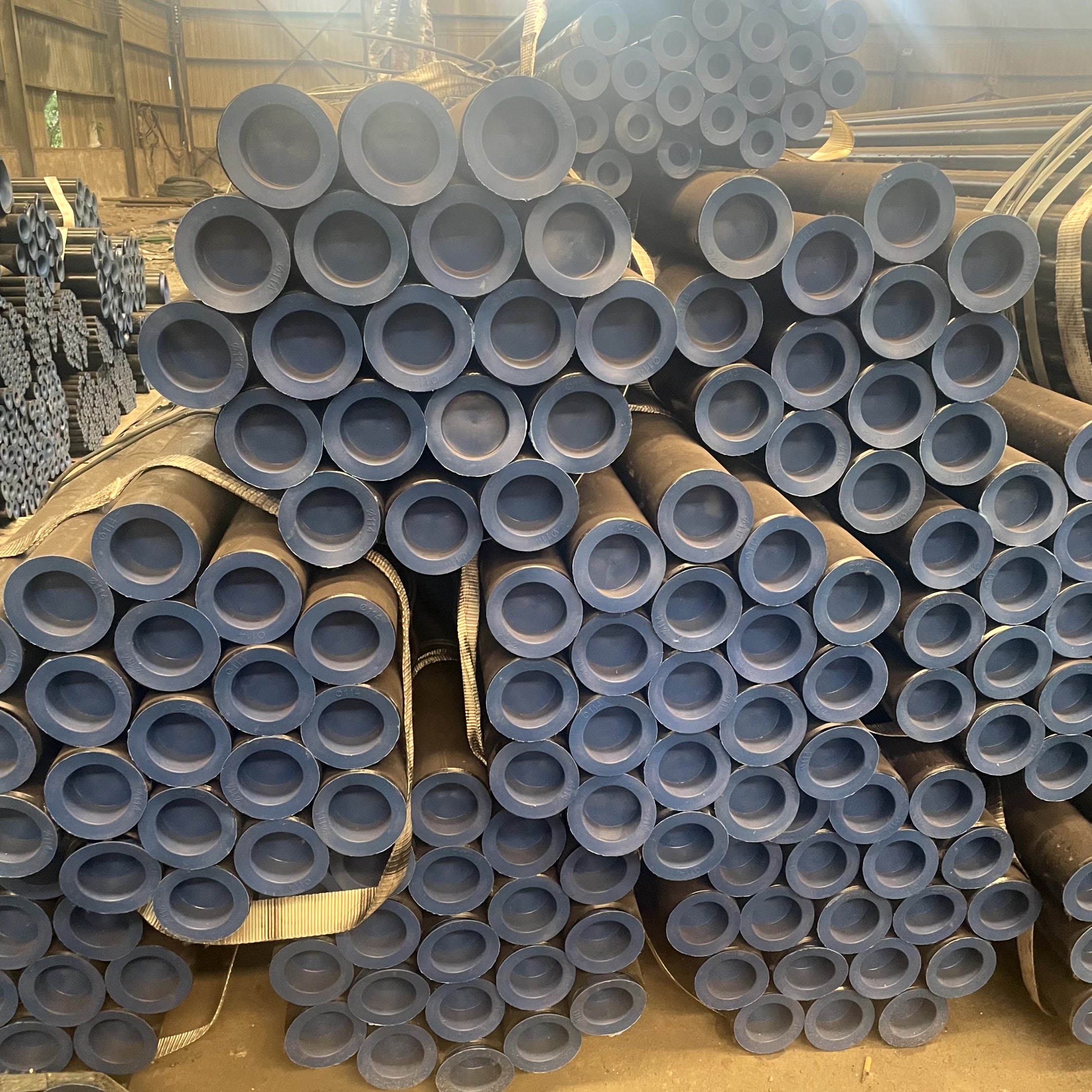In industries requiring high corrosion resistance, hygiene standards, and structural reliability—such as food processing, chemical engineering, pharmaceuticals, and architecture—stainless steel pipes have become irreplaceable core components. Among them, JIS G3459 seamless pipes, SUS304 stainless steel pipes, JIS stainless steel seamless pipes, and Japanese standard stainless steel tubes stand out for their strict compliance with Japanese Industrial Standards (JIS), ensuring consistent quality and performance. This guide systematically deciphers their definitions, technical standards, selection methods, and application scenarios, while exploring stainless steel piping solutions for end-to-end project needs, providing professional support for engineers, procurement teams, and project managers.
1. Core Definitions: Clarifying Japanese Standard Stainless Steel Pipe Variants
Each type of JIS-standard stainless steel pipe is designed for specific functional requirements, with distinct material properties and manufacturing processes. Understanding their fundamental definitions is the first step toward rational application.
1.1 JIS G3459 Seamless Pipe
JIS G3459 seamless pipe is a key product specified in Japan’s JIS G3459 standard, focusing on seamless stainless steel pipes for general industrial use. Its core characteristics include:
- Material Scope: Covers a wide range of stainless steel grades, including austenitic (e.g., SUS304, SUS316), ferritic (e.g., SUS430), and martensitic (e.g., SUS410) stainless steels, adapting to diverse corrosion and temperature demands.
- Dimensional Specifications: Outer diameter (OD) ranges from 10.5mm to 660mm, wall thickness (WT) from 1.2mm to 50mm, with strict tolerances (OD tolerance ±0.75%, WT tolerance ±12.5% for standard grades).
- Application Focus: Suitable for general industrial pipelines (e.g., chemical fluid transport, water treatment) rather than specialized high-pressure or ultra-high-temperature scenarios (covered by other JIS standards like G3448).
1.2 SUS304 Stainless Steel Pipe
SUS304 stainless steel pipe is the most widely used austenitic stainless steel pipe under JIS standards (specified in JIS G4305), renowned for its balanced performance:
- Chemical Composition: Contains 18–20% chromium (Cr) and 8–10.5% nickel (Ni), forming a stable chromium oxide passivation film on the surface, providing excellent corrosion resistance to atmospheric, water, and weak acid environments.
- Mechanical Properties: Tensile strength ≥515MPa, yield strength ≥205MPa, elongation ≥40%, ensuring good ductility for bending, welding, and forming.
- Key Advantages: Non-magnetic (in annealed state), easy to clean, and cost-effective—making it the first choice for hygiene-sensitive industries (e.g., food, pharmaceuticals) and general corrosion-resistant pipelines.
1.3 JIS Stainless Steel Seamless Pipe
JIS stainless steel seamless pipe is a broad category encompassing all seamless stainless steel pipes compliant with JIS standards, including JIS G3459 (general use), JIS G3448 (high-pressure service), and JIS G3456 (heat exchanger tubes). Its defining features:
- Manufacturing Process: Produced via hot piercing + cold drawing/rolling, eliminating weld seams that risk corrosion or cracking under stress.
- Quality Control: Mandatory non-destructive testing (NDT) such as ultrasonic testing (UT) for internal defects and eddy current testing (ECT) for surface flaws, per JIS Z2343 requirements.
- Standard Uniformity: Ensures interchangeability across Japanese and global projects, as JIS standards are widely recognized in Asia and international supply chains.
1.4 Japanese Standard Stainless Steel Tube
Japanese standard stainless steel tube is a general term for stainless steel tubes (seamless or welded) adhering to JIS specifications, differing from other regional standards (e.g., ASTM, EN) in:
- Material Nomenclature: Uses the "SUS" prefix (e.g., SUS304, SUS316) instead of ASTM’s "TP" (e.g., TP304) or EN’s "X" (e.g., X5CrNi18-10).
- Testing Requirements: Emphasizes salt spray testing (JIS Z2371) for corrosion resistance and flattening tests (JIS G3459 Clause 8) to verify ductility, stricter than some international standards.
- Application Alignment: Tailored to Japanese industrial needs, such as compact dimensions for automotive or electronic equipment pipelines.
1.5 304 Stainless Steel Pipe
304 stainless steel pipe is the global equivalent of SUS304 (per ASTM A312, EN 10216-5), with identical chemical composition and performance. The key distinction:
- Regional Compliance: "304" is commonly used in North America and Europe, while "SUS304" is specific to JIS standards. However, their mechanical and corrosion properties are interchangeable for most applications.
- Market Preference: Japanese and Asian suppliers often label it "SUS304," while Western suppliers use "304"—but both meet the core requirement of 18/8 Cr-Ni composition.
1.6 Stainless Steel Piping Solution
Stainless steel piping solution refers to end-to-end systems integrating pipes, fittings (elbows, flanges, valves), coatings, and installation services, designed to solve specific project challenges:
- Customization: Tailored to flow rate, pressure, and medium (e.g., sanitary fittings for food, anti-corrosion coatings for seawater).
- System Compatibility: Ensures pipes and fittings (same material, standard) work seamlessly to avoid leakage or corrosion at joints.
- Lifecycle Support: Includes pre-installation design, on-site welding guidance, and post-operation maintenance (e.g., passivation, cleaning).
2. Key JIS Standards: Technical Requirements & Compliance
JIS standards define the strict technical benchmarks for stainless steel pipes, ensuring quality, safety, and interoperability. Below are the most critical standards and their core requirements:
2.1 JIS G3459: Seamless Stainless Steel Pipes for General Use
This is the foundational standard for JIS G3459 seamless pipes, with key provisions:
- Material Grades: Specifies 20+ grades, including SUS304 (austenitic), SUS430 (ferritic), and SUS410 (martensitic), each with defined chemical composition limits (e.g., SUS304: C ≤0.08%, Cr 18.0–20.0%, Ni 8.0–10.5%).
- Mechanical Testing: Mandatory tensile, elongation, and hardness tests (e.g., SUS304: Brinell hardness ≤201 HB). For thick-walled pipes (WT >10mm), impact testing at -196℃ (for cryogenic applications) is optional.
- Surface Finish: Two classes—"Pickled" (matte finish, Ra ≤6.3μm) for industrial use and "Bright Annealed" (Ra ≤0.8μm) for hygiene or decorative applications.
2.2 JIS G4305: Stainless Steel Bars and Wire Rods (Base for SUS304)
While focusing on bars, JIS G4305 sets the material standard for SUS304 stainless steel pipes, including:
- Corrosion Resistance: Requires passivation treatment (nitric acid or citric acid) to enhance the chromium oxide film, with a minimum 500-hour salt spray test (JIS Z2371) showing no red rust.
- Heat Treatment: SUS304 must undergo solution annealing (1010–1150℃, rapid cooling) to dissolve carbides, preventing intergranular corrosion.
2.3 JIS G3448: Seamless Stainless Steel Pipes for High-Pressure Service
For high-pressure applications (e.g., chemical reactors), this standard complements JIS G3459 with stricter requirements:
- Pressure Rating: Designed for working pressures up to 30MPa, with hydrostatic testing at 1.5× design pressure (minimum 30 seconds holding time).
- Material Restriction: Limits to high-strength grades like SUS316H (tensile strength ≥550MPa) and SUS321 (titanium-stabilized to resist intergranular corrosion).
2.4 JIS Z2343: Non-Destructive Testing for Seamless Steel Pipes
All JIS stainless steel seamless pipes must comply with this NDT standard:
- Ultrasonic Testing (UT): 100% inspection for pipes with WT >6mm to detect internal defects (e.g., cracks, inclusions) ≥20% of WT depth.
- Eddy Current Testing (ECT): 100% inspection for pipes with WT ≤6mm to identify surface flaws (e.g., scratches, pits) ≥0.2mm in depth.
3. Selection Guide: Matching JIS Stainless Steel Pipes to Applications
Selecting the right JIS stainless steel pipe requires balancing application needs, material performance, and cost-efficiency. Follow these steps:
3.1 Define Application Requirements
- Corrosion Environment:
- Mild corrosion (atmosphere, freshwater): SUS304/JIS G3459 pipes (cost-effective).
- Seawater or chloride-rich media: Upgrade to SUS316 (2–3% molybdenum added) to prevent pitting corrosion.
- Strong acids (sulfuric, nitric): Use SUS316L (low carbon) or duplex stainless steel (SUS329J1) for enhanced resistance.
- Pressure & Temperature:
- Low pressure (<1MPa, ≤100℃): JIS G3459 SUS304 (standard wall thickness, e.g., Sch 10).
- High pressure (10–30MPa, 200–400℃): JIS G3448 SUS316H (thick wall, e.g., Sch 80).
- Cryogenic (-196℃, LNG transport): JIS G3459 SUS304L (low carbon to avoid brittle fracture).
- Hygiene Needs:
- Food/pharmaceuticals: SUS304 with bright annealed finish (Ra ≤0.4μm) + sanitary fittings (per JIS T3305).
3.2 Verify Material & Standard Compliance
- Grade Confirmation: Ensure the pipe grade matches the application (e.g., SUS304, not SUS430, for food use—SUS430 lacks nickel and is prone to rust in wet environments).
- Standard Alignment: Choose the correct JIS standard:
- General industrial pipelines: JIS G3459.
- High-pressure equipment: JIS G3448.
- Heat exchangers: JIS G3456.
- Certifications: Request JIS mark certification (JIS Mark Inspection System) and mill test reports (MTR) including chemical composition, mechanical properties, and NDT results.
3.3 Evaluate Piping Solution Components
A complete stainless steel piping solution requires matching pipes with compatible fittings:
- Fittings Material: Same grade as pipes (e.g., SUS304 pipes + SUS304 elbows) to avoid galvanic corrosion.
- Connection Type:
- Hygiene applications: Welded (butt weld) or tri-clamp (per JIS T3305) for easy cleaning.
- High-pressure applications: Threaded (JIS B0203) or flange (JIS B2220) connections.
- Coatings & Treatments: For buried pipes, add polyethylene (PE) coating (JIS K6910) to prevent soil corrosion; for high-temperature pipes, use aluminum-based heat-resistant paint.
3.4 Compare Cost & Lifespan
- Short-Term vs. Long-Term Cost: SUS304 is cheaper upfront than SUS316, but in corrosive environments (e.g., coastal areas), SUS316’s 2–3x longer lifespan (15–20 years vs. 5–8 years for SUS304) reduces total ownership cost.
- Thickness Optimization: Use pressure calculation software (per JIS B8270) to select the minimum required wall thickness—over-specifying increases cost unnecessarily.
4. Application Cases: JIS Stainless Steel Pipes in Key Industries
4.1 Food & Beverage Processing
- Project: A Japanese beverage plant’s juice 输送 pipeline.
- Solution: JIS G3459 SUS304 seamless pipes (OD 50mm, WT 3.5mm) with bright annealed finish, paired with JIS T3305 sanitary tri-clamp fittings.
- Rationale: SUS304’s corrosion resistance prevents juice contamination; bright finish avoids bacterial adhesion; seamless design eliminates weld seam crevices where bacteria grow.
- Result: Complies with Japan’s Food Sanitation Act (JIS Z8801) and reduces cleaning frequency by 30%.
4.2 Chemical Engineering
- Project: A Korean chemical plant’s sulfuric acid dilute solution pipeline.
- Solution: JIS G3459 SUS316L seamless pipes (OD 100mm, WT 6mm) with pickled finish, connected via JIS B2220 flange fittings (PTFE gaskets for acid resistance).
- Rationale: SUS316L’s molybdenum content resists sulfuric acid corrosion; low carbon content prevents intergranular corrosion during welding.
- Result: Zero leakage or corrosion after 5 years of operation.
4.3 Architectural Plumbing
- Project: A high-rise residential building in Tokyo’s water supply system.
- Solution: Stainless steel piping solution including JIS G3459 SUS304 pipes (OD 25mm, WT 2.0mm), JIS B0203 threaded fittings, and PE coating for buried sections.
- Rationale: SUS304 resists tap water corrosion (chlorine in water); lightweight design reduces installation labor; PE coating protects buried pipes from soil damage.
- Result: Longer service life (20+ years) than galvanized steel pipes (5–8 years), reducing replacement costs.
4.4 Pharmaceutical Manufacturing
- Project: A Japanese pharmaceutical plant’s sterile drug solution pipeline.
- Solution: JIS G3459 SUS304 seamless pipes (OD 32mm, WT 3.0mm) with electro-polished finish (Ra ≤0.2μm), welded via orbital welding (per JIS Z3033) to ensure sterility.
- Rationale: Electro-polished finish eliminates surface micro-pores, preventing drug residue; orbital welding ensures uniform welds without contamination.
- Result: Meets Japan’s Pharmaceutical and Medical Device Act (PMDA) requirements for sterile manufacturing.
5. Quality Control & Maintenance Best Practices
5.1 Manufacturing Process Control
- Material Sourcing: Use raw materials from certified mills (e.g., Nippon Steel, JFE Steel) to ensure chemical composition compliance with JIS standards.
- Seamless Production: Control hot piercing temperature (1200–1250℃ for SUS304) to avoid material oxidation; use multi-pass cold drawing to achieve tight dimensional tolerances.
- Heat Treatment: For SUS304, strictly execute solution annealing (1050℃, water quenching) to dissolve chromium carbides—skip this step, and intergranular corrosion may occur within 6 months.
5.2 Installation Quality Assurance
- Welding Standards: Follow JIS Z3040 (stainless steel welding procedures) for butt welds—use argon arc welding (TIG) with back purging to prevent weld oxidation.
- Cleaning: After installation, clean pipes with a 5–10% nitric acid solution (JIS K8500) to remove oil, grease, and welding slag, then passivate to rebuild the passivation film.
- Pressure Testing: Conduct hydrostatic testing at 1.5× design pressure (per JIS G3459 Clause 9) for 30 minutes—no pressure drop or leakage is allowed.
5.3 Post-Operation Maintenance
- Routine Inspection:
- Monthly: Visual inspection for surface rust or leakage.
- Annually: Ultrasonic testing to check wall thickness (replace if thinning exceeds 20% of original WT).
- Corrosion Prevention:
- For outdoor pipes: Clean with fresh water every 3 months to remove salt deposits (critical in coastal areas).
- For food-grade pipes: Use alkaline cleaners (JIS K3362) to avoid acid damage to the passivation film.
- Repair Guidelines: Small surface scratches (≤0.1mm depth) can be polished with 320-grit sandpaper; deeper defects require pipe section replacement (no patching allowed for hygiene or high-pressure pipes).
6. Future Trends: Innovation in JIS Stainless Steel Pipes & Solutions
6.1 Material Innovation
- Low-Nickel Alternatives: Develop SUS304-like grades with reduced nickel (e.g., SUS304J1L, 6–8% Ni) to lower costs while maintaining 80% of SUS304’s corrosion resistance—ideal for non-critical industrial applications.
- High-Strength Grades: Launch SUS304H-TA (thermomechanically aged) with tensile strength increased by 30% (≥670MPa) for lightweight, high-pressure pipelines in automotive or aerospace industries.
6.2 Process Upgrade
- Intelligent Manufacturing: Adopt AI-controlled cold drawing machines with laser dimensional monitoring (accuracy ±0.02mm) to reduce tolerance variation by 50% compared to traditional methods.
- Green Production: Use renewable energy (solar, wind) for solution annealing furnaces; recycle 95% of process water (per JIS K0102) to reduce environmental impact.
6.3 Piping Solution Integration
- Digital Twin Systems: Create digital twins of stainless steel piping solutions to simulate flow, pressure, and corrosion trends—predict maintenance needs 12–18 months in advance, reducing unplanned downtime by 25%.
- Modular Solutions: Pre-fabricate piping modules (pipes + fittings + valves) in factories (per JIS B8280) to cut on-site installation time by 40%, ideal for fast-track projects like emergency water treatment plants.
6.4 Sustainability Focus
- Recyclable Design: Use 100% recyclable SUS304 (recycled stainless steel retains 99% of original properties) to align with Japan’s Circular Economy Basic Act.
- Long-Life Solutions: Develop "50-year pipelines" with improved passivation films (e.g., cerium-based passivation, JIS K5600) that double the service life of traditional SUS304 pipes.
Conclusion
JIS stainless steel pipes—represented by JIS G3459 seamless pipes and SUS304 stainless steel pipes—are synonymous with precision, reliability, and compliance, making them the preferred choice for industries demanding high performance. By understanding their definitions, mastering JIS standard requirements, and selecting tailored stainless steel piping solutions, enterprises can optimize project efficiency, reduce risks, and extend equipment lifespan. As material innovation, intelligent manufacturing, and sustainability drive the industry forward, staying updated on JIS standard revisions (e.g., 2024 update to JIS G3459) and emerging technologies will be key to leveraging these products for competitive advantage. For customized solutions (e.g., ultra-large diameter JIS G3459 pipes, cryogenic SUS304L solutions), collaborate with JIS-certified manufacturers to ensure alignment with project goals and global quality benchmarks.





